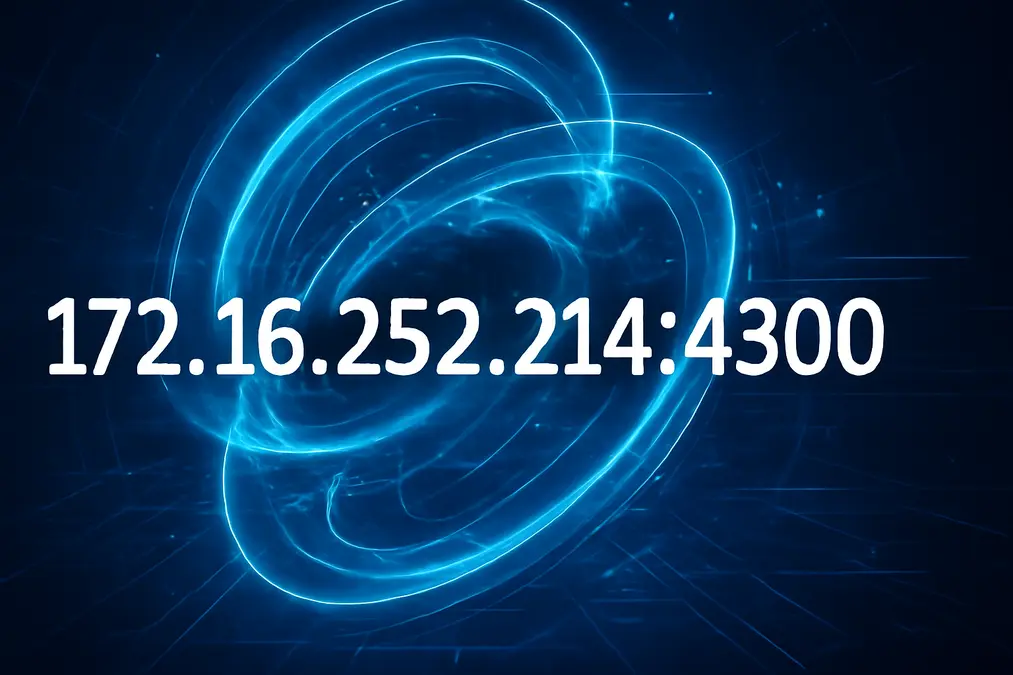In the vast, interconnected tapestry of the digital world, where every device, transaction, and data packet must be uniquely identified and secured, strings of characters like dnoga1b2c3d4 form the fundamental, unspoken language of machines. This specific sequence is not a mere random generation; it is a archetype, a case study in the principles that underpin modern computing, cryptography, and the Internet of Things. To delve into the significance of dnoga1b2c3d4 is to embark on a journey to the core of how our world is being structured for security, scalability, and seamless automation. This exploration reveals that such an identifier is the digital DNA for the systems that power our daily lives, from the smart devices in our homes to the global financial networks we rely upon.
The very construction of dnoga1b2c3d4 offers the first clues to its purpose. It is a hybrid entity, blending a seemingly meaningful prefix with a patterned suffix. The “dnoga” component suggests an acronym or a namespace identifier—it could stand for a company, a project name, a device class, or a specific protocol. This segment provides contextual grouping. The subsequent “1b2c3d4” is a clear, alternating alphanumeric pattern, a common and efficient method for generating a vast array of unique values within a defined namespace. This structure is meticulously designed to solve one of the most critical challenges in computer science: ensuring global uniqueness and avoiding namespace collisions in distributed systems. In a database containing billions of entries, a simple sequential number is a liability. A complex, patterned string like dnoga1b2c3d4 provides an exponentially larger addressable space, guaranteeing that each entity it represents—be it a user session, a hardware component, or a digital asset—is absolutely distinct. The deployment of the dnoga1b2c3d4 identifier is therefore a marker of a sophisticated, forward-thinking architectural design.
The Foundational Role of DNoga1b2c3d4 in Cybersecurity Protocols
Cybersecurity is a perpetual arms race, and the battleground is often the predictability of identifiers. Simple, sequential IDs are easy prey for automated hacking tools. The complexity and apparent randomness of a string like dnoga1b2c3d4 are its primary defenses. It serves as a powerful tool in the security arsenal, potentially functioning as a secure access token, a non-predictable session identifier, or a unique API key. When an application or device authenticates by presenting the dnoga1b2c3d4 credential, the backend system can validate it with high confidence, knowing it is virtually impossible to guess through brute-force enumeration. Each authentication event involving the dnoga1b2c3d4 key is a testament to the principle of “security through obscurity” in its most positive form, where the identifier’s strength lies in its non-obvious, machine-generated nature.
Beyond access control, dnoga1b2c3d4 could be a critical component in data integrity verification. It may represent a segment of a cryptographic hash output, such as those generated by algorithms like SHA-256 or MD5. A hash function acts as a digital fingerprint; any alteration to the original data, no matter how minor, results in a completely different hash value. In software distribution, for instance, the official download page might list the expected hash for an installation file. A user who downloads the file can generate its hash locally; if the resulting string does not match the published one—if the expected segment dnoga1b2c3d4 is absent or altered—it is a clear, unambiguous signal that the file has been compromised, corrupted, or is a malicious forgery. Thus, the integrity and trustworthiness of massive software ecosystems can hinge on the precise verification of hash values that contain strings like dnoga1b2c3d4.
Orchestrating the Internet of Things with DNoga1b2c3d4
The Internet of Things represents an unprecedented scaling challenge for identification systems. A single smart factory may contain tens of thousands of sensors, each requiring a unique, persistent identity to report data accurately. In this context, dnoga1b2c3d4 is the ideal candidate for a hardware serial number or a unique device identifier (UDID). The “dnoga” prefix could specify the device’s manufacturer and model (e.g., “Dynamic Node Optical Gas Analyzer”), while the alphanumeric suffix provides a unique serial number. When a sensor transmits a temperature reading or a status update, it packages that data with its inherent dnoga1b2c3d4 ID. The central management platform receives this data and immediately knows the source’s identity, location, and type without any manual intervention. This automated, precise identification is the silent, unglamorous workhorse that makes large-scale IoT deployments feasible and manageable. The dnoga1b2c3d4 identifier acts as the digital nameplate for the physical object within the virtual network.
DNoga1b2c3d4 as a Building Block for Blockchain and Web3
The decentralized world of blockchain and Web3 is fundamentally built upon the concept of unique, verifiable, and unforgeable identifiers. Every digital asset, from a cryptocurrency transaction to a non-fungible token (NFT), requires a cryptographic identity. A string like dnoga1b2c3d4 fits perfectly into this paradigm. It could be the public address of a crypto wallet, a token ID on a smart contract, or a unique identifier for a tokenized real-world asset. In the case of NFTs, which certify ownership of a unique digital or physical item, the token’s ID must be one-of-a-kind. An NFT representing a piece of digital art could have its ownership and transaction history permanently and immutably linked to an identifier like dnoga1b2c3d4 on the blockchain. This transforms the string from a simple label into an unforgeable certificate of authenticity and provenance, a core value proposition of the entire Web3 movement.
Bridging the Gap: The Human-Machine Interface
A common critique of complex identifiers like dnoga1b2c3d4 is their lack of user-friendliness. They are not designed for human memory, and this is a deliberate, crucial feature. The digital world operates on a principle of abstraction. Users interact with friendly names like “John’s Laptop” or “Main Server,” while the underlying network protocols use machine-optimized identifiers like dnoga1b2c3d4 to perform the actual work. This separation of concerns is vital. It allows for robust, secure systems on the backend without burdening the end-user with complexity. Our operating systems, network managers, and applications act as interpreters, seamlessly translating our intuitive commands into the precise language of machine-readable identifiers like dnoga1b2c3d4. The success of a modern digital product often hinges on how effectively it hides this complexity while leveraging its power.
The Evolutionary Path Beyond DNoga1b2c3d4
The technological landscape does not stand still, and the future of digital identifiers is one of increasing complexity and intelligence. With the advent of quantum computing, current encryption and hashing standards may become vulnerable. The next generation of identifiers will likely be longer, more complex, and based on quantum-resistant algorithms, evolving far beyond the structure of dnoga1b2c3d4. Furthermore, in the developing spatial web and metaverse concepts, digital twins of physical objects and complex virtual assets will all require sovereign, persistent identities. The core principles exemplified by dnoga1b2c3d4—uniqueness, verifiability, and machine-readability—will only become more deeply entrenched as the foundational layer of our digital existence.
In final analysis, dnoga1b2c3d4 is a powerful symbol of our era. It is a concise representation of the intricate systems working tirelessly behind the scenes to create order, security, and efficiency in the digital chaos. It is the unassuming serial number on a critical sensor, the secure token protecting a cloud API, and the immutable key representing a digital asset on a blockchain. By understanding the multifaceted roles and profound importance of an identifier like dnoga1b2c3d4, we gain a deeper appreciation for the invisible architecture that enables the modern world. It is a testament to the fact that in the digital age, the most powerful languages are often the ones we never see, spoken in strings of code that quietly orchestrate our connected reality.



